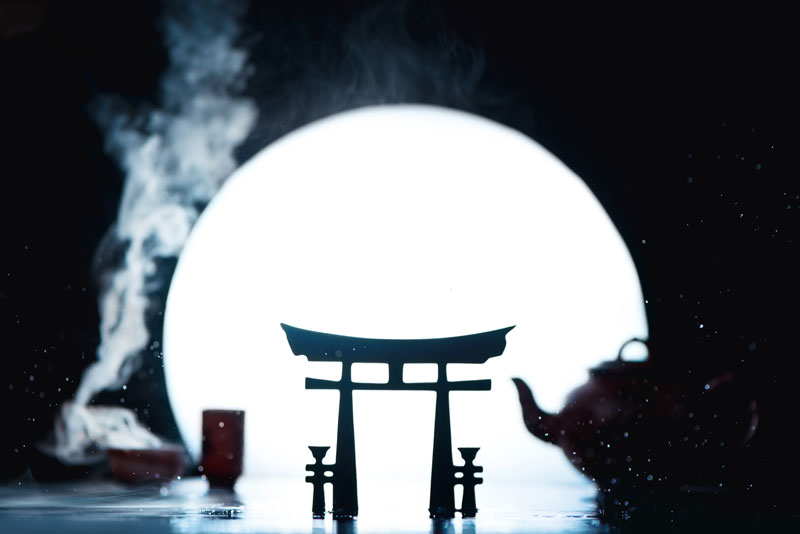What do tea, foxes and swordsmiths have in common? They are all under the domain of Inari Ōkami (稲荷大神), the Japanese deity for agriculture, foxes, fertility, industry, rice, sake and tea; patron of blacksmiths, brothels, entertainers, merchants and swordsmiths; and protector of warriors. Oh and also, for good measure, general prosperity and worldly success is part of their portfolio too.
Sometimes depicted as a bearded man riding a white fox or as a woman with flowing hair carrying sheaves of rice, Inari is one of the principal kami – or divinities/spirits – of the Shinto religion. Historically, Inari was considered a megami (female kami) until Buddhism began to dominate Japan and many of the higher-powered female deities like Inari culturally transitioned to male gods. (AMAB – assigned megami at birth? AFAB – assigned fox god at birth? It’s all very confusing.)
When female, they cross over into Buddhism as a Dakiniten, and are also conflated with Benzaiten, a member of the Seven Lucky Gods who is based on Hindu goddess Saraswati. (Benzaiten, by the by, represents financial fortune, talent, beauty and music, and is the patron of artists, writers, dancers and geisha.)
With a portfolio this extensive, it’s no surprise more than one-third of all shrines in Japan are dedicated to Inari, and you have definitely seen some of the symbols related to them, most notably the red torii gates that mark the transition between the mundane world and the spiritual.
(Kyoto’s Fushimi Inari-taisha is the most famous. As an aside, the main gate to this shrine was erected by samurai lord Hideyoshi, whose notorious tea crime was to order the death of Sen no Rikyū, father of the Japanese tea ceremony, by seppuku. No word on how Inari felt about that.)
The tea deity aspect is less well known than Inari’s connection with foxes – the kitsune, or nine-tailed fox, is said to be their messenger. It is through their connection with agriculture that gives them dominion and protectorship over staples such as tea and rice, but not much else is said about this domain. There is a beautiful story in scholar Fukada Kojitsu’s 1830 tome Kissa Yoroku (Teahouse Rumours) about a fox in a teahouse, though, which I think is peak Inari.
A fox in the teahouse
Tea master Sen no Sōtan (grandson of aforementioned Sen no Rikyū and founder of the Omotesenke tea school) was a frequent visitor to Shokoku-ji Temple where, it is said, a white fox lived. The fox would mingle and meditate with the priests and sometimes play Go with the temple master. This fox learnt tea ceremony from watching our man Sōtan and was so good that he would disguise himself as the tea master and hold tea ceremonies at the Jisho-in pagoda if Sōtan was running late. Occasionally the fox would visit other tea masters around the neighbourhood to drink tea and eat cakes and cause havoc. Everyone knew it was the fox, but enjoyed his company so much they called him Sōtan Kitsune.
Upon his death, the monks at the temple built the Sōtan Inari Shrine, or Sotaninariyashiro, which you can see today at Shokoku-ji.
